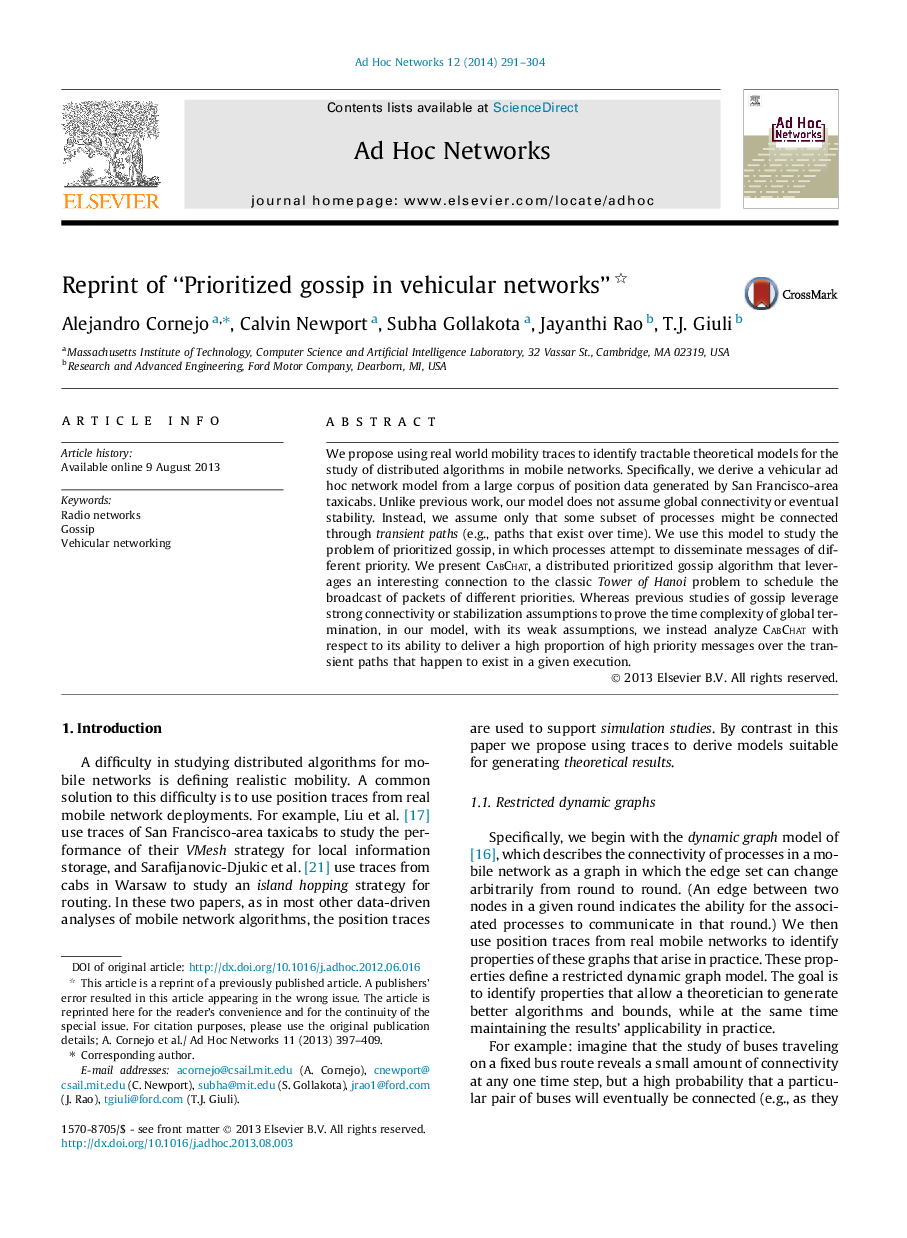| Article ID | Journal | Published Year | Pages | File Type |
|---|---|---|---|---|
| 6878831 | Ad Hoc Networks | 2014 | 14 Pages |
Abstract
We propose using real world mobility traces to identify tractable theoretical models for the study of distributed algorithms in mobile networks. Specifically, we derive a vehicular ad hoc network model from a large corpus of position data generated by San Francisco-area taxicabs. Unlike previous work, our model does not assume global connectivity or eventual stability. Instead, we assume only that some subset of processes might be connected through transient paths (e.g., paths that exist over time). We use this model to study the problem of prioritized gossip, in which processes attempt to disseminate messages of different priority. We present CabChat, a distributed prioritized gossip algorithm that leverages an interesting connection to the classic Tower of Hanoi problem to schedule the broadcast of packets of different priorities. Whereas previous studies of gossip leverage strong connectivity or stabilization assumptions to prove the time complexity of global termination, in our model, with its weak assumptions, we instead analyze CabChat with respect to its ability to deliver a high proportion of high priority messages over the transient paths that happen to exist in a given execution.
Related Topics
Physical Sciences and Engineering
Computer Science
Computer Networks and Communications
Authors
Alejandro Cornejo, Calvin Newport, Subha Gollakota, Jayanthi Rao, T.J. Giuli,
